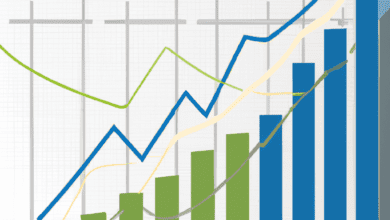Navigating the Forex Landscape: The Interplay of Interest Rates, Geopolitics, and Central Bank Policies

In the intricate world of foreign exchange (forex) trading, a multitude of factors converge to shape currency values and influence trading strategies. Among these, interest rates stand out as a crucial determinant, driving fluctuations in exchange rates and impacting investor sentiment. This article delves into the complex interplay between interest rates and currency exchange, offering insights into how geopolitical events further complicate the forex landscape. We will explore effective strategies for trading major currency pairs like EUR/USD and GBP/USD, highlighting the pivotal role of central banks in shaping currency values. Additionally, we will examine how inflation affects trading strategies, the potential for profit through carry trading, and the emergence of digital currencies as a disruptive force in traditional forex markets. By leveraging economic indicators, traders can better predict currency movements, navigating a market characterized by volatility and opportunity. Join us as we unravel these critical elements, equipping you with the knowledge to thrive in the dynamic world of forex trading.
- 1. "Interest Rates and Currency Exchange: Understanding the Connection"
- 2. "Geopolitical Influences: Navigating Forex Markets in Uncertain Times"
- 3. "Central Banks and Currency Value: Strategies for Successful Forex Trading"
1. "Interest Rates and Currency Exchange: Understanding the Connection"
Interest rates play a pivotal role in determining currency exchange rates, as they influence the flow of capital between countries. When a central bank raises interest rates, it typically leads to an appreciation of the national currency. Higher interest rates offer better returns on investments denominated in that currency, attracting foreign capital and driving demand for the currency upwards. Conversely, a decrease in interest rates can lead to depreciation, as investors seek higher yields elsewhere.
The relationship between interest rates and currency values is also impacted by expectations and market sentiment. Traders often react not just to actual changes in interest rates, but also to anticipated future movements. For instance, if a central bank signals a potential rate hike, the currency may strengthen in anticipation of increased returns, even before any official change occurs.
Additionally, the differential between interest rates in two countries can create attractive opportunities for carry trading. Investors may borrow in a currency with a lower interest rate and invest in a currency with a higher rate, capitalizing on the interest rate spread while also being exposed to potential currency appreciation.
Overall, understanding the connection between interest rates and currency exchange is essential for traders and investors in the forex market, as it provides insights into potential currency movements and helps inform strategic decisions.
2. "Geopolitical Influences: Navigating Forex Markets in Uncertain Times"
Geopolitical events play a crucial role in shaping currency exchange rates, often creating volatility in forex markets. Factors such as political instability, elections, trade negotiations, and international conflicts can lead to sudden shifts in investor sentiment and currency valuations. For instance, heightened tensions between countries may cause investors to seek safe-haven currencies like the US dollar or Swiss franc, driving up their value while simultaneously depreciating currencies of nations perceived as risky.
In uncertain times, traders must be vigilant about geopolitical developments and their potential implications for currency pairs. Events such as Brexit negotiations or the ongoing trade war between the United States and China can create fluctuations in major currency pairs like EUR/USD and GBP/USD. Traders often analyze news headlines, government statements, and economic data releases to gauge the potential impact on forex markets.
Moreover, the interconnectedness of global economies means that a geopolitical event in one region can have ripple effects worldwide. For example, unrest in the Middle East can affect oil prices, which, in turn, influences currencies of oil-exporting countries. Thus, understanding the broader geopolitical landscape is essential for successful forex trading.
Traders can employ various strategies to navigate this uncertainty. This may include setting stop-loss orders to manage risk, diversifying their portfolios to mitigate exposure to specific currencies, and staying updated on geopolitical developments through reliable news sources and analytical tools. By incorporating geopolitical analysis into their trading strategies, forex traders can better anticipate market movements and make informed decisions in an ever-changing global environment.
3. "Central Banks and Currency Value: Strategies for Successful Forex Trading"
Central banks play a pivotal role in determining currency values through their monetary policies, interest rate decisions, and interventions in the forex market. For forex traders, understanding central bank strategies is crucial for making informed trading decisions.
One of the primary tools employed by central banks is the adjustment of interest rates. When a central bank raises interest rates, it often leads to an appreciation of the currency, as higher rates attract foreign capital seeking better returns. Conversely, a rate cut can lead to currency depreciation. Traders closely monitor central bank announcements, statements, and economic indicators that signal potential shifts in monetary policy, allowing them to position themselves ahead of market movements.
Additionally, central banks may engage in quantitative easing (QE) or other forms of stimulus to influence currency value. QE involves the purchase of government securities to increase the money supply and lower interest rates, which can lead to a weaker currency. Traders must be aware of such policies and their implications on currency pairs, particularly during times of economic uncertainty.
Furthermore, central banks can intervene directly in forex markets to stabilize or devalue their currency. For example, if a currency is appreciating too quickly, a central bank may sell its own currency to increase supply and bring down its value. Traders should keep an eye on central bank interventions, as these can result in sudden and significant movements in currency pairs.
To effectively trade major currency pairs like EUR/USD and GBP/USD, traders should develop a strategy that incorporates central bank analysis. This can include using economic calendars to track central bank meetings and interest rate decisions, analyzing central bank rhetoric for hints at future policy moves, and employing technical analysis to identify potential entry and exit points based on expected market reactions.
In summary, successful forex trading requires a keen understanding of how central banks influence currency values. By staying informed about central bank policies and being prepared to adjust trading strategies accordingly, traders can enhance their chances of success in the dynamic forex market.
In conclusion, the intricate relationship between interest rates, geopolitical events, and the strategies employed by traders underscores the complexity of the foreign exchange market. As we have explored, interest rates play a pivotal role in shaping currency values, influencing not only individual trading decisions but also broader economic conditions. Geopolitical events add another layer of unpredictability, highlighting the importance of staying informed and adaptable in a rapidly changing landscape.
Central banks are key players in this arena, wielding significant influence over currency values through their monetary policies. Understanding their actions provides traders with critical insights that can inform their strategies. Additionally, inflation remains a fundamental consideration for forex traders, as it directly impacts currency strength and market dynamics.
The emergence of digital currencies further transforms the forex landscape, presenting both challenges and opportunities for traditional trading practices. As traders become increasingly sophisticated in utilizing economic indicators to forecast movements, the ability to adapt and innovate will be paramount.
Ultimately, successful forex trading requires a comprehensive understanding of these interconnected factors, as well as a proactive approach to managing risk and capitalizing on opportunities. By integrating insights from interest rates, geopolitical influences, central banking policies, and emerging technologies, traders can navigate the complexities of the forex market with greater confidence and effectiveness.





